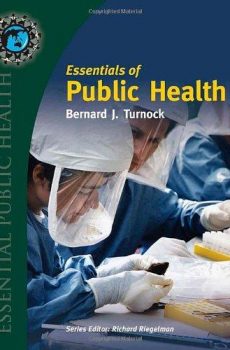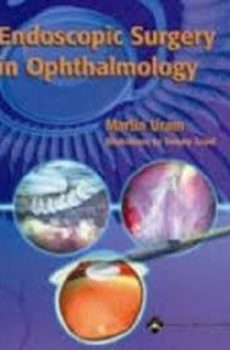
Endoscopic Surgery in Ophthalmology
10,190.00₹ 5,990.00₹
Authored by a pioneer in the growing new field of ophthalmic endoscopy, this book describes in detail the relevant anatomy, techniques, and technology. The coverage includes specific approaches for use in vitreo-retinal, glaucoma, cataract, and oculoplastic surgery. This is the first definitive teaching text/atlas in this growing new field. This text will provide much of the training needed by ophthalmologists in order to be facile with endoscopic imaging, dissection, and laser technique. Two DVDs with narrated video clips of various procedures accompany the book.
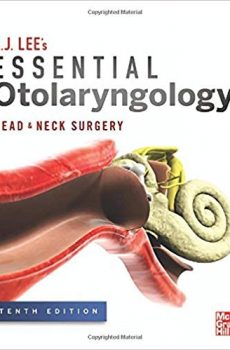
Essential Otolaryngology: Head and Neck Surgery
8,890.00₹ 3,995.00₹
For more than four decades, K.J. Lee’s Essential Otolaryngology has been the premier international guide to otolaryngology. This classic reference delivers top-to-bottom coverage that spans the entire discipline and provides an easy, at-a-glance review of the field’s must-know information. The tenth edition features quick-access bulleted text, 150 illustrations, 100 tables, and thoroughly updated chapters that bring you up to speed with today’s practice of otolaryngology.
Features:
- The latest clinical information to help you treat dozens of conditions involving the head and neck, including:Balance disorders,Facial nerve paralysis,Congenital hearing loss,Cleft lip and palate,Infections of the temporal bone,Balance disorders,Facial nerve paralysis,Tumors of the larynx,Sinusitis,Cysts and tumors of the jaw
- Coverage of nutrition, fluid, and electrolytes; facial plastic surgery; anesthesia for head and neck surgery; and pharmacology and therapeutics
- The perfect otolaryngology primer and the ideal board review resource – in one compact volume
- An increased number of diagnostic algorithms to enhance clinical decision making
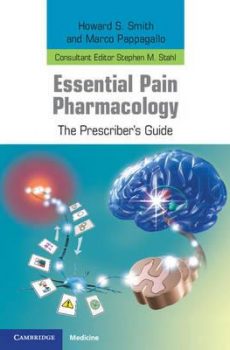
Essential Pain Pharmacology
7,199.00₹ 3,490.00₹
Essential Pain Pharmacology: The Prescriber’s Guide expertly reviews the most important medications used to relieve pain, now considered by many physicians as the fifth vital sign. The catalogue of analgesics has expanded rapidly, and this text presents the most up-to-date, comprehensive array of agents available for prescribing. Each clear and concise drug entry covers the range of indications, advantages and disadvantages, and tips for appropriate dosing and avoiding adverse effects. A separate section covers nutraceuticals, a class of drug increasingly used to manage chronic pain, yet little discussed in medical literature. The detailed description of each medication enables the user to make quick and informed decisions, confident that they are best serving the needs of their patients. Practical ‘pearls’ for each entry provide a quick go-to reference for the key information to consider before prescribing. This concise user-friendly reference is a must-have on the shelf of every physician.
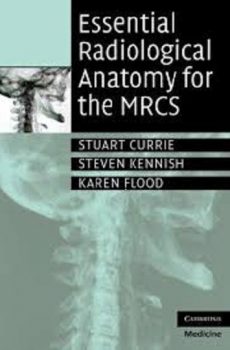
Essential Radiological Anatomy for the MRCS
3,689.00₹ 2,500.00₹
Over recent years the MRCS viva examination has increasingly made use of radiological imaging to facilitate the discussion of anatomy relevant to surgical practice. It is rare for junior doctors to receive adequate exposure to radiology in their day-to-day surgical practice, which makes preparation for this part of the examination difficult. For many, examinations are stressful. The last thing a candidate needs is to be faced with unfamiliar radiological images. This review of surgically relevant radiological imaging aims to prevent initial uncertainties and will allow candidates to discuss relevant anatomy and score valuable points. An invaluable addition to any revision plan, this title also: highlights typical anatomy viva questions familiarizes candidates with a range of images of differing modalities (plain film, fluoroscopy, computed tomography and magnetic resonance imaging) introduces different planes of imaging, enabling candidates to deal with unusual coronal or sagittal views with confidence gives concise but detailed notes for quick consultation
- Provides radiological images that are commonly used in the MRCS examination – gives readers the opportunity to familiarize themselves with images prior to sitting the exam
- Provides anatomy viva type questions and concise but detailed anatomical notes – gives readers examples of the type of topics to expect in the exam, with quick reference to the relevant anatomy
- Provides examples of relevant clinical notes – gives readers examples of how the viva may progress to cover clinical topics

Essentials of Anaesthetic Equipment
2,170.00₹ 1,395.00₹
Prepared by authors based in the UK, this highly practical, illustrated guide continues to provide an up-to-date, practical introduction to anaesthetic equipment and its use in clinical practice. An invaluable resource for all those who work with anaesthetic equipment, including anaesthetists studying for the FRCA examinations, nurses and operating department practitioners, this new edition has been completely updated to reflect current equipment and training requirements. Lavishly illustrated throughout with colour photos and clearly-drawn line illustrations plus fully revised self-assessment sections, Essentials of Anaesthetic Equipment, fourth edition, retains the superbly organized and easy-to-read format that has made previous editions such a success.
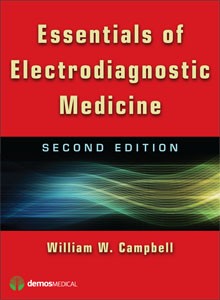
Essentials of Electrodiagnostic Medicine
6,590.00₹ 4,190.00₹
Essentials of Electrodiagnostic Medicine is an intermediate level text for residents, fellows, and practitioners. This practical book is readable in the course of a standard resident rotation and ideal for board exam review, while also comprehensive enough to be a useful reference. The second edition has been thoroughly updated throughout while retaining the key features of the first edition.
Essentials of Electrodiagnostic Medicine is divided into two parts. The first part covers the theoretical and technical fundamentals including basic electronics, instrumentation, and the anatomical, physiological, and pathological underpinnings of electrodiagnostic medicine. The second half of the book is devoted to the clinical applications and electroclinical correlations of the most common diseases and conditions. Each chapter begins with an outline and concludes with a bulleted list of key points and annotated bibliography that succinctly summarizes the relevant literature.
Essentials of Electrodiagnostic Medicine features:
- Practical, readable, treatment of the fundamentals of electrodiagnostic medicine
- Designed for use during a standard EMG rotation
- Covers clinical neuromuscular disease in addition to basic electrodiagnostic concepts
- Each chapter contains detailed summaries, key points, and an annotated bibliography
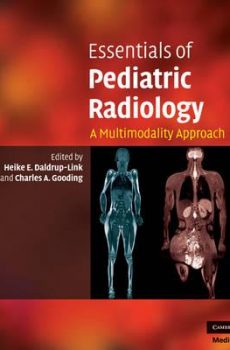
ESSENTIALS OF PEDIATRIC RADIOLOGY
8,900.00₹ 4,999.00₹
Essentials of Pediatric Radiology: A Multimodality Approach provides a concise overview of both basic and complex topics encountered by pediatric radiologists in their daily practice. Written by leading pediatric radiologists from renowned children’s hospitals, it focuses particularly on multimodality imaging, covering the full gamut of radiologic diagnostic techniques, including conventional radiography and ultrasound, Doppler ultrasound, up-to-date CT and MRI techniques, and PET-CT. Each chapter is generously illustrated with high quality images, as well as graphs, tables, decision flowcharts and featured cases. Chapters are arranged according to pathologies, rather than organ systems, providing the reader with clinically-oriented information when employing ‘whole body’ techniques or analysing scans involving multiple anatomical sites. The book is complemented by online presentations of cases as ‘unknowns’, which enable readers to test their diagnostic proficiency. A key text for pediatric radiology fellows, radiology residents and general radiologists, this is also essential reading for all pediatricians.
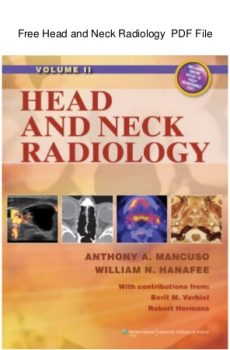
Essentials of Pediatric Radiology
39,990.00₹ 13,790.00₹
Written and edited by acknowledged masters in the field, this two-volume full-color text is the most comprehensive and current reference on head and neck radiology. It features more than 10,000 images and covers every disorder in every region of the head and neck.
The first two sections cover applied imaging fundamentals and general pathology, pathophysiology, patterns of disease, and natural history of head and neck disorders correlated with imaging appearance. Subsequent sections focus on specific anatomic regions: the eye, orbit, visual pathways, and cranial nerves III, IV, and VI; sinonasal and craniofacial region including cranial nerve V; temporal bone, posterior skull base, posterior fossa, and cranial nerves VII-XII; infrahyoid neck and cervico-thoracic junction (thoracic inlet); thyroid and parathyroid glands; major salivary glands; nasopharynx; oropharynx; oral cavity and floor of the mouth; larynx, hypopharynx, and cervical esophagus; trachea; hypopharynx; and cervical esophagus. The text covers all current imaging modalities, including plain film, MRI, CT, ultrasound, and nuclear medicine including PET.

Essentials of Psychiatry
9,730.00₹ 5,490.00₹
Essentials of Psychiatry provides a synopsis of the most critical material in the field of psychiatry. It covers the whole field, including assessment of the patient, definitions of each disorder, all treatment options and prognosis. The phenomenological classification of disorders is based on the APA’s DSM-IV-TR: Diagnostic and Statistical Manual of Mental Disorders. This is followed by full treatment plans for each condition and a review of each therapy option in a dedicated therapeutics section.
- Provides all the clinical information needed by psychiatry trainees to complete their residency and pass the boards
- All psychiatric assessment tools are described in detail
- Full descriptions of the DSM-IV-TR Diagnostic Criteria sets for each disorder
- Clinical vignettes (case histories) describe difficult clinical scenarios and give management options and outcome
This book is relevant to trainees in psychiatry worldwide, as well as other mental health workers such as psychologists, mental health nurses and social workers.

Ethno-psychopharmacology: Advances in Current Practice
8,990.00₹ 3,290.00₹
No one reacts or responds to a drug in exactly the same way, just as no two persons are exactly alike. Individual and ethnic differences in drug response have been consistently found in clinical practice. This book covers all the important factors that explain how and why drug treatments used in psychiatry affect individuals and ethnic groups differently. It will increase understanding of how biological differences interact with social, cultural and environmental factors to bring about overall effects of medications, particularly in individuals from various ethnicities. This book uniquely brings these varied aspects together to consider a holistic approach to drug therapy across diverse biological make-up and cultures. This information has direct practical use in the clinical setting.
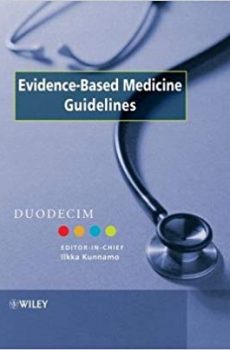
Evidence-Based Medicine Guidelines
28,000.00₹ 3,450.00₹
Evidence-Based Medicine Guidelines fills the demand for a handbook discussing the diagnosis and treatment of a wide range of diseases and conditions encountered by health care professionals.
The title was first published in Finland by the Finnish Medical Society, where it is now considered to be the single most important support tool for the physicians’ decision making in their daily work.
What sets EBM Guidelines apart from competing books?
- Provides physicians with fast and easy access to practice guidelines based on the best available research evidence
- Covers practically all medical conditions encountered in general practice
- Developed by over 300 experienced general practitioners and specialists worldwide
- Includes both diagnostic and therapeutic guidelines, and recommendations on diagnostic tests and drug dosage
- Presented in a user-friendly format with self contained chapters based on clinical subjects
- Clear and concise explanations of all available evidence results in the guideline for treatment
- The strength of evidence is graded from A-D making this title a quick and easy reference whenever and wherever you need it!
- Assumes no prior knowledge of EBM or statistics – all the work of searching and appraisal has been done for you!
- Seeks to include guidelines where clinical evidence is incomplete or unavailable
- Contains full-colour photographs and tables throughout
Easy-to-read and fast support at the point of care – EBM Guidelines:
- Summarises the best available evidence – Cochrane reviews – DARE abstracts – Clinical Evidence topics – original articles in medical journals – abstracts in the Health Technology Assessment Database – NHS Economic Evaluation
- Evaluates and grades the strength of all individual evidence from A (Strong research-based evidence) to D (No scientific evidence)
- Suggests guidelines based on clinical evidence. If clinical evidence is inadequate or missing, an expert panel evaluate all other available information and suggests the appropriate guideline
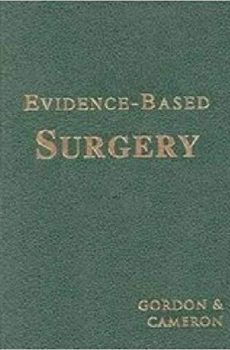
Evidence-Based Surgery
4,830.00₹ 1,200.00₹
As the healthcare environment changes, the need for outcomes-based treatment planning becomes even more critical. This book guides the reader through current outcomes-based research as it pertains to surgery. First, it gives a complete overview of the practice of evidence-based surgery (EBS), with topics such as treatment planning, policy issues, and ethical issues. Then it gives practical, step-by-step advice on the methodology of EBS, with chapters on study design, outcomes measures, adjustments for complications and comorbidities, cost, and data sources. Last, it publishes the results of numerous respected EBS studies.

Exercise-Induced Acute Renal Failure
8,100.00₹ 3,590.00₹
Acute renal failure induced by rhabdomyolysis after strenuous, prolonged exercise such as marathon running or mountain climbing is a well-known medical phenomenon, but exercise-induced acute renal failure after short-term anaerobic exercise – for instance, short-distance track races – has been recognized only recently. This monograph provides in-depth information on exercise-induced acute renal failure after short-term anaerobic exercise, which causes severe pain in the loin and patchy renal ischemia with no sign of rhabdomyolysis. Half of the patients suffering from this condition experience renal hypouricemia, for which approximately 20% are treated with dialysis. This complete clinical reference book includes characteristics of the disease, diagnosis, treatment and prognosis, and corresponding preventive measures. Important information on gene analysis and etiology is also included, creating a valuable resource for nephrologists as well as for emergency physicians and those in the field of sports medicine.
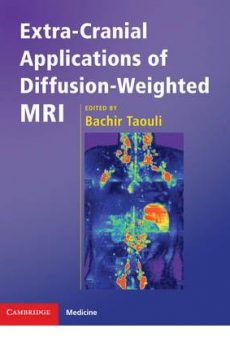
Extra Cranial Applications of Diffusion Weighted MRI
8,990.00₹ 2,490.00₹
Continuous improvement in MRI technology in recent years has led to the application of diffusion-weighted MR imaging in organ systems outside the brain. Extra-Cranial Applications of Diffusion-Weighted MRI provides an extensive review of current and future applications of this imaging modality by world-renowned experts. Organized by organ system, each chapter is highly illustrated, offering a balance of protocols, illustrations and principles of image interpretation. An initial chapter provides an overview of relevant physics and other technical details, followed by detailed chapters on all major body systems including liver, kidney, prostate, breast and spine. A final chapter discusses assessment of therapy response. Written and edited by leading DW-MRI experts worldwide, Extra-Cranial Applications of Diffusion-Weighted MRI is an invaluable resource for radiology trainees, practising radiologists and for researchers in a wide variety of disciplines.
- Organized according to organ-based applications of diffusion-weighted MRI, enabling quick and easy navigation and use
- Includes body imaging diffusion protocols, providing beginners with the information needed to start body diffusion-weighted imaging
- Rich with tables and figures, providing an excellent and practical overview
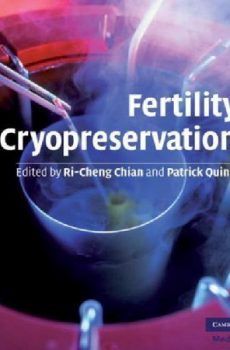
Fertility Cryopreservation
12,900.00₹ 2,580.00₹
Protecting the reproductive potential of young patients undergoing cancer therapy is increasingly important. With modern treatment protocols, 80% of patients can be expected to survive. It has been estimated that up to one in 250 young adults will be a survivor of childhood cancer in the future; infertility, however, may be a consequence. As a wide range of fertility preservation methods are increasingly offered by clinicians, this systematic and comprehensive textbook dealing with the cryobiology, technology and clinical approach to this therapy will be essential reading to infertility specialists, embryologists, oncologists, cryobiologists, ObGyns, andrologists, and urologists with an interest in fertility preservation. Fertility Cryopreservation reviews all the techniques of this increasingly important field within reproductive medicine. It covers the basic principles of pertinent cryobiology, and contains major sections on the different therapies available, written by international specialists combining experience from both academic centers and commercial industries.
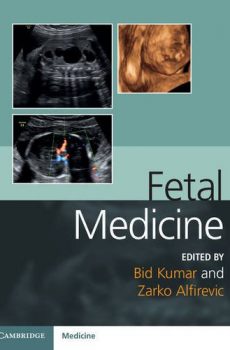
Fetal Medicine
7,090.00₹ 3,990.00₹
Based on the curriculum of the Royal College of Obstetricians and Gynaecologists’ Advanced Training Skills Module in Fetal Medicine, this book provides a comprehensive knowledge base for all doctors practising in obstetrics and maternal-fetal medicine worldwide. It acts as a reference source for the many changing concepts in fetal medicine and is well-illustrated with images of normal and abnormal findings in pregnancy that will facilitate proper understanding of normal and pathological fetal development. Coverage includes embryology, fetal physiology; fetal anomalies; fetal diseases; prescribing and teratogenesis in pregnancy; termination of pregnancy; fetal growth and wellbeing; multiple pregnancy; the placenta and amniotic fluid; and diagnostic and therapeutic invasive procedures. Readers will benefit from the theoretical knowledge and vast clinical experience of the internationally renowned authorship. Overall this book will prepare you for dealing with congenital abnormalities detected during pregnancy, including the organization and supervision of screening programmes for structural and chromosomal anomalies.
- Covers the curriculum for the RCOG’s Advanced Training Skills Module (ATSM) in fetal medicine
- Also of interest to all trainees and consultants looking to develop and update their skills in fetal medicine
- Chapter authors are all recognized experts in their fields
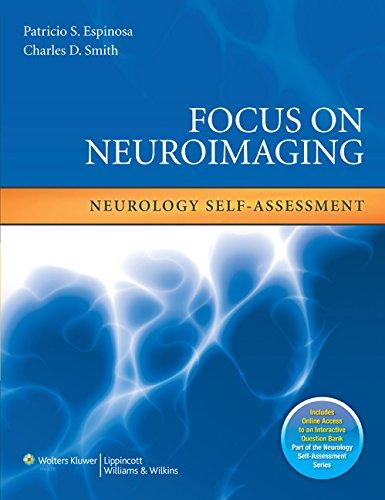
Focus on Neuroimaging: Neurology Self-Assessment
7,270.00₹ 2,990.00₹
The book presents 101 cases from adult neurology, paediatric neurology, and neurosurgery practice covering all major neuroradiology topics. Each case begins with one or more high-resolution images, a brief history, and questions, with answers and detailed explanations on the next page.
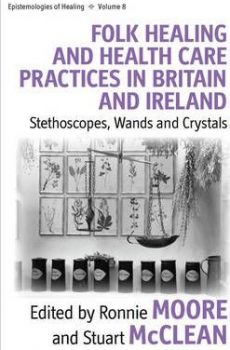
Folk Healing and Health Care Practices in Britain and Ireland
8,400.00₹ 4,495.00₹
Folk, alternative and complementary health care practices in contemporary Western society are currently experiencing a renaissance, albeit with features that are unique to this historical moment. At the same time biomedicine is under scrutiny, experiencing a number of distinct and multifaceted crises. In this volume the authors draw together cutting edge cross-cultural, interdisciplinary research in Britain and Ireland, focusing on exploring the role and significance of healing practices in diverse local contexts, such as the use of crystals, herbs, cures and charms, potions and lotions.

Foundations of Psychiatric Sleep Medicine
8,590.00₹ 2,520.00₹
Sleep-related complaints are extremely common across the spectrum of psychiatric illness. Accurate diagnosis and management of sleep disturbances requires an understanding of the neurobiological mechanisms underlying sleep and wakefulness, the characteristics of sleep disturbance inherent to psychiatric illness and primary sleep disorders, as well as the psychopharmacologic and behavioral treatments available. Foundations of Psychiatric Sleep Medicine provides a uniquely accessible, practical, and expert summary of current clinical concepts at the sleep-psychiatry interface. Topics covered include: basic principles in sleep science, clinical sleep history taking, primary sleep disorders in psychiatric contexts, and sleep disturbance across a range of mood, anxiety, psychotic, substance use, cognitive and developmental disorders. Written by outstanding experts in the field of sleep medicine and psychiatry, this academically rigorous and clinically useful text is an essential resource for psychiatrists, psychologists and other health professionals interested in the relationship between sleep and mental illness.











